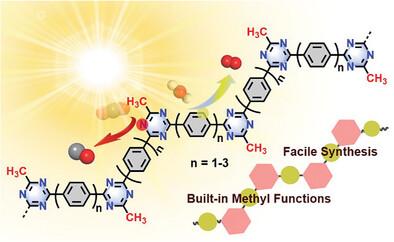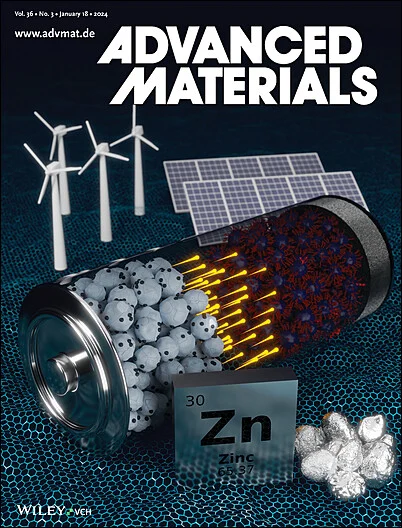Rational Design of Methylated Triazine-Based Linear Conjugated Polymers for Efficient CO2 Photoreduction with Water
IF 27.4
1区 材料科学
Q1 CHEMISTRY, MULTIDISCIPLINARY
引用次数: 0
Abstract
The development of semiconducting conjugated polymers for photoredox catalysis holds great promise for sustainable utilization of solar energy. Herein a new family of porous methylated triazine-based linear conjugated polymers is reported that enable efficient photoreduction of carbon dioxide (CO2) with water (H2O) vapor, in the absence of any additional photosensitizer, sacrificial agents or cocatalysts. It is demonstrated that the key lies in the generation of methylated triazine linkages through a facile condensation reaction between benzamidine and acetic anhydride, which impedes the formation of conventional triazine-based frameworks. It is also shown that regulating conjugated linear backbones with different lengths of electron-donated benzyl units provides a facile means to modulate their optical properties and the exciton dissociation, thereby affording more long-lived photogenerated charge carriers and boosting charge separation and transfer. A high-performance carbon monoxide (CO) production rate of 218.9 µmol g−1 h−1 is achieved with ≈ 100% CO selectivity, which is accompanied by exceptional H2O oxidation to oxygen (O2). It anticipates this new study will advance synthetic approaches toward polymeric semiconductors and facilitate new possibilities for triazine-based conjugated polymers with promising potential in artificial photocatalysis.

求助全文
约1分钟内获得全文
求助全文
来源期刊

Advanced Materials
工程技术-材料科学:综合
CiteScore
43.00
自引率
4.10%
发文量
2182
审稿时长
2 months
期刊介绍:
Advanced Materials, one of the world's most prestigious journals and the foundation of the Advanced portfolio, is the home of choice for best-in-class materials science for more than 30 years. Following this fast-growing and interdisciplinary field, we are considering and publishing the most important discoveries on any and all materials from materials scientists, chemists, physicists, engineers as well as health and life scientists and bringing you the latest results and trends in modern materials-related research every week.
 求助内容:
求助内容: 应助结果提醒方式:
应助结果提醒方式:


